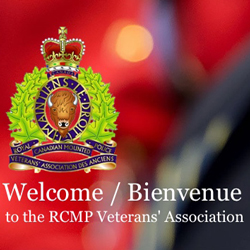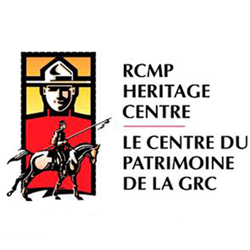Sergeant Major Fred Bagley
Fred Bagley’s musical talents and leadership provided a major contribution to the Force and to the communities he served in.
With regarding setting records, he was first in the following areas:
a) being the youngest member to be sworn into the Force;
b) first trumpeter in the Force;
c) present to guard and witness the first person to be hung in the North-West Territories at Fort Saskatchewan; and
d) first member to lead a musical performance before Royalty.
EARLY YEARS
Frederick Augustus Bagley was born on September 22, 1858 in St. Lucia, British West Indies. He was the son of Robert Bagley – a retired sergeant of Her Majesty’s Royal Artillery and in 1874 was residing in Toronto Canada.
Robert Bagley was an old friend of Commissioner George French as they both had served in the Imperial Army together.
In 1874, Commissioner French received approval to recruit an additional 150 new members to the newly formed North-West Mounted Police.
At this time, Fred Bagley was a Trumpeter in “A” Battery Troop at the Royal School of Gunnery at Kingston and was very eager to join this new mounted unit. Despite the fact that the age for recruits was a minimum of 21 years of age, his father was able to convince Commissioner French to accept young Fred Bagley at the age of only 15.
JOINS THE FORCE
Prior to joining the Force, Fred Bagley calls “I had always been a close student of the works of James Fenimore Cooper and imagined that life in the NWMP would be one grand round of riding wild mustangs, chasing whisky traders and horse thieves, potting hostile savages, and hobnobbing with haughty Indian Princes and lovely unsophisticated Princesses. Alas! A few years in the service of the Force sufficed to dissipate much of this glamour.” [1]
On May 1, 1874, Fred Bagley was sworn into the Force and assigned the regimental #247 and became the youngest member to be sworn into the Force. His pay rate was set as a Sub-Constable and was paid .75 a day.
Upon departing Ontario, he told his mother that he would be back in home in a year. However, his sense of adventure and call to duty distracted him from going back to visit his mother. It did manage to return for holiday but it was fourteen years later.
Being the youngest in the Force and not considered a full-fledged member, Fred Bagley performed his regular Trumpeter duties such as: reveille, call to meals, lights-out, alarm, etc… In additional, he: attended regular drill and horsemanship practices; drew supplies for the cook’s kitchen; set the mess tables; brought cooked food from the cook-house; dished out food portions; washed dishes; and scrubbed tables and benches.
With the arrival of the second group of 150 members arriving at Fort Dufferin in 1874, uniforms were issue and training began. Prior to the commencement of the March West, Commissioner French ordered a full parade of all members of the Force.
Fred Bagley recalls this first parade – it “an inspiring sight with every man in new scarlet tunic, white puggree-bound helmet, the loose ends hanging down each man’s back, giving a rather ‘Indian Mutiny’ effect; the horses fresh and in splendid condition, the metal parts of the accoutrements burnished and glittering in the sun, and the artillery troop ‘C’ with its 9-pounder, M.L., steel guns and bright chestnut horses conspicuous in the middle of the column. This was the one and only occasion in the entire history of the Force that it was to be seen thus on ceremonial parade in full strength, fully equipped and everyone officer and man present.”[2]
At Fort Dufferin, the daily activities hinged around the trumpet calls provided by Fred Bagley. “Reveille, the 6:30 A.M. bugle call that reverberated through the barracks like thunder in a mountain valley, was a first-class effort by the youthful Fred Bagley, now known as the Kid Cop. He smiled broadly and appeared to gain at once the two additional inches he so dearly wanted for his boyish stature. ”[3]
MARCH WEST
On July 8, 1874, the Force commenced its March West into the unknown and uncharted wilderness inhabited by warlike savages. According to accounts of the event, there was no special send-off. Troops and formations were established and the departure was an organized affair.
The March West contingent consisted of: 302 policemen, 338 riding horses, 114 Red River Carts, 73 wagons, 142 oxen, 21 drivers, 2 field guns, and 93 head of cattle.
For the March West, Fred Bagley was assigned to “D” Troop and was under the careful watch of Sub-Inspector James Walker (O.18).
In the early weeks of the March West, Fred Bagley was delegated by Commissioner French to sometimes sound reveille at 3 AM. This early call was undertaken so the men would become more organized in their efforts to quickly advance westward and to become familiar with equipment. Eventually, the “healthful outdoor life molded them into a hardy lot as they trudged monotonously along to the accompaniment of thudding hoofs, clattering accoutrements and equipment and wailing, grease-hungry Red River carts.”[4]
In an effort to preserve the condition of the horses, it was decided to alternate in riding an walking beside the horse. “Those walking hours in still-new riding boots produced painful blisters and painful memories. The Kid Bugler, Fred Bagley, told of conscientiously plugging along during the stipulated hours of riding and walking and then removing his boots on again. With still some distance to go to reach the camp, along came Sub-Inspector Walker, who hoisted Bagley on his shoulders and carried him piggy-back the rest of the way into camp.” [5]
The heat and arid atmosphere of the prairie in mid-summer was intensified by a strong head wind causing cracked lips which rendered shouting or laughing painful. Bagley’s lips were so parched and swollen from thirst than when ordered to sound the trumpet – he couldn’t produce a note.
“By early August, as a result of drinking brackish water, twenty-two men had dysentery, including the bugler, Bagley, whose lips were so swollen and blistered that he could not blow a single note. Horses were dying at the rate of nearly six a day.”[6]
After the March West, Fred Bagley and his Troop turned back at Trois Buttes and returned to Swan River. In subsequent years, he assisted with the construction of Fort MacLeod, Fort Saskatchewan, Fort Qu’Appelle and Fort Battleford.
CAREER DEVELOPMENT
In 1877, Fred Bagley was a member of the first Force band which was formed by Sergeant Major Thomas Lake (Reg. #13). This first band performed at the Treaty signing at the Blackfeet Crossing.
On December 20, 1879, Fred Bagley was in charge of guarding and witnessing the hanging of the first person in the North West Territories at Fort Saskatchewan. The individual who was hung was an Indian named Swift Runner. Swift Runner was found guilty of cannibalism by killing and eating his wife, their five children, and his brother.
Between 1882 to 1885, Fred Bagley was stationed at Fort Battleford. On August 1, 1882, he was promoted to Corporal and to Sergeant on February 1, 1884. While at the Fort, he established a volunteer NWMP Band.
NORTH-WEST REBELLION
On March 26, 1885, the North-West Rebellion commenced when the Metis force under Gabriel Dumont defeated a combined force of 90 men from the Prince Albert Volunteers and the North-West Mounted Police led by Superintendent Leif Crozier at Duck Lake.
The day after this battle, the Commissioner ordered Sergeant Fred Bagley to lead a group of 25 NWMP members with ammunition and supplies to reinforce Fort Carleton. As Bagley’s group approached Fort, they received a message from the Commissioner to return to Fort Battleford. Fortunate for the Bagley group, they were not spotted by the Metis force for these supplies would have greatly assisted their rebel cause.
At Fort Battleford, Sgt. Bagley was involved in several scouting parties and came under fire on several occasions such as: retrieving the death body and pursuing Chief Little Poplar and his band for five days.
Based on his actions at Fort Battleford and the surrounding areas, he was awarded a North-West Rebellion Medal. However, the medal was not issued until August 13, 1902.[7]
PROBLEMS WITH THE COMMISSIONER
On March 19, 1887, Fred Bagley was promoted to Staff Sergeant and transferred to Regina to assist Inspector Constantine in the planning and establishment of a NWMP Post at Banff. While in Regina, he was also asked to establish a Regimental Force Band.
On May 4, 1888, while as the acting Bandmaster, Commissioner Laurence Herchmer gave Fred Bagley “an order regarding the attendance of the band members at the Church of England choir practice. When the band members failed to attend the practice – the Commissioner Herchmer flew into a rage. Bagley was arrested and brought before him charged with disobeying an order. He was found guilty and reduce in rank form Staff Sergeant to Sergeant.”[8]
“The fact that Herchmer was a member of the Church of England and Bagley a Catholic was suspected to have been at the root of the demotion.”[9]
Subsequent to this demotion and rage by Commissioner Herchmer, the Regina Leader newspaper published the incident and many other incidents which outlined the rages and poor leadership of the Commissioner.
“It was soon clear that Bagley and Herchmer had different understandings of the meaning of the order. The form claimed that since he was a Roman Catholic he could not be ordered to sing in an Anglican choir. The Commissioner explained to (Jack) White (Comptroller of the NWMP) that it was not his intention that Bagley should attend, but only that he see that the Church of England members of the band participated.
In response, the Deputy Minister (Jack White) chided him for his thoughtlessness. Church services could not be considered a part of a member’s duties, he told the Commissioner, and the cut of 50 cents a day in Bagley’s pay was a harsh punishment not in keeping with his good records.”[10]
In 1887, S/Sgt. Bagley was placed in charge of the new Banff NWMP Post and was provided a staff of 18 members to patrol the new Banff Park.
In 1888, the Commanding Officer for Fort Calgary was in need of a Band Master for their volunteer NMWP band. The Commissioner was convinced to transfer Fred Bagley to Fort Calgary. On May 1, 1889, Fred Bagley was promoted back to the rank of Staff Sergeant by Commissioner Herchmer.
Fred Bagley’s band performed in the new Banff Spring Hotel and was a popular attraction for visiting tourists.
After returning from three months of leave in Ontario, he was transferred to Calgary and married one of the town’s most respected and admired daughters. “They made an attractive couple, she with her charming air and hospitable grace, he with his soldierly bearing and gentlemanly conduct.”
QUEEN VICTORIA’s DIAMOND JUBILEE
With the celebrations of Queen Victoria’s Diamond Jubilee schedule for June 22, 1897, there was a push by members of Parliament and by the Commissioner to have a contingent of Force members to participate in the Diamond Jubilee parade. After much consideration, Sir Wilfrid Laurier agreed that 25 Force members would be included in the 200 member Canadian Contingent being sent to London.
The Force’s participation in this parade would be the first international appearance of the NWMP. Many editorials had been written in England about the achievements of the NWMP in the Canadian West. It was important to Commissioner Herchmer that this initial presence of the NWMP in London be favourable in the eyes of the other Imperial regiments.
By the end of April 1897, twenty-three members were selected. Fred Bagley was one of these members. The chosen members were all: young, trim, handsome, 5’10” to 6’0” in height, average waist of 35 inches, average chest of 39 inches and most sported long waxed mustaches which were considered dashing at the time.[11]
Commissioner received approval for new uniforms to be worn by the NWMP delegation: prairie suits, cowboy hats and overalls with elastic sided boots and box spurs for walking out.
While in England, Fred Bagley and his band gave a musical command performance at Windsor Castle and he himself was presented to Her Majesty (Queen Victoria).”[12]
Shortly after returning to Canada, Fred Bagley was transferred to Maple Creek and was promoted to the rank of Sergeant Major.
ADVANCEMENT IN LIFE
On April 30, 1899 – Fred Bagley retired from the Force after completing 25 years of dedicated service. His pension was $328.50 per year.
After retiring, he continued to continued his dedicated service to his community and country as outlined below:
a) Boer War – Captain in charge of “C” Squadron – Canadian Mounted Rifles;
b) 15th Light Horse Regiment – Appointed Adjutant and headed up their Regimental Band;
c) World War I – Captain with the 82nd Battalion then transferred to the 192nd Battalion and went to Europe in 1915. Later promoted to the rank of Major.
d) Assisted with the establishment of many community bands;
e) Largely responsible for the creation of the Museum of Natural History; and
f) One of the original members who pushed for the creation of the Royal North-West Mounted Police Veterans Association.
In 1924, he returned to Banff with his wife. Despite the issues he had with the Force, he “never conceded that his youthful union with the Mounted Police was a mistake.”[13]
In writing to the RCMP Quarterly Editor in 1945, Fred Bagley stated “We old ‘originals’ are prone sometimes to believe that we are neglected or ignored by a generation that ‘knew not Joseph’ and his works … I am now in my 87th year and my interest and pride in the splendid fellows who are today carrying on, and even sometimes excelling the great traditions of the old Force, never slackens. I always get a great thrill whenever I see them on parade or swaggering down the street.”[14]
On October 8, 1945, Fred Bagley passed away in Banff Alberta. In tribute to his support to the community of Banff, all the merchants closed their business for his funeral.
[1] MacLeod, R.C. – “The North-West Mounted Police and Law Enforcement: 1873 to 1905.” Toronto: University of Toronto Press (1976) (page 85)
[2] Turner, John Peter – “The North-West Mounted Police: Volume I.” – Ottawa: King’s Printer (1950)(120-121)
[3] MacEwan, Grant – “Colonel James Walker: Men of the Western Frontier.” Saskatoon: Western Producer Prairie Books (1989 (page 36)
[4] “They Opened the Way for the Peaceful Development of Canada’s Broad Plains.” Ottawa: RCMP Quarterly (Volume 11 – October 1945 – January, 1946) (page 144)
[5] MacEwan, Grant – “Colonel James Walker: Men of the Western Frontier.” Saskatoon: Western Producer Prairie Books (1989 (page 47)
[6] Wilkins, Charles – “The Wild Ride: A History of the North West Mounted Police 1873 – 1904.” Vancouver: Stanton Atkins & Dosil Publishing (2010) (page 68)
[7] Klancher, Donald – “The North West Mounted Police And The North-West Rebellion.” (1997) (page 77)
[8] Beahen, William and Horrall, Stan – “Red Coats On The Prairies: The North-West Mounted Police 1886-1900.” Regina: Centax Books PrintWest Publish Services (1998) (page 135)
[9] Wilkins, Charles – “The Wild Ride: A History of the North West Mounted Police 1873 – 1904.” Vancouver: Stanton Atkins & Dosil Publishing (2010) (page 184)
[10] Beahen, William and Horrall, Stan – “Red Coats On The Prairies: The North-West Mounted Police 1886-1900.” Regina: Centax Books PrintWest Publish Services (1998) (page 135)
[11] Beahen, William and Horrall, Stan – “Red Coats on the Prairies: The North-West Mounted Police 1886-1900.” Regina: Centax Books, 1998 (Page 289)
[12] “They Opened the Way for the Peaceful Development of Canada’s Broad Plains.” Ottawa: RCMP Quarterly (Volume 11 – October 1945 – January, 1946) (page 163)
[13] MacEwan, Grant – “Colonel James Walker: Men of the Western Frontier.” Saskatoon: Western Producer Prairie Books (1989 (page 31-32)
[14] “Editorial – Major Bagley.” Ottawa: RCMP Quarterly – Volume 11 (October 1945 – January 1946) (Pages 85)


 November 11, 2012
November 11, 2012 













